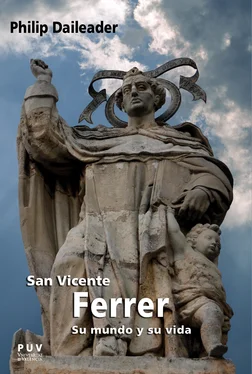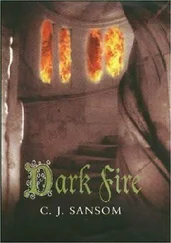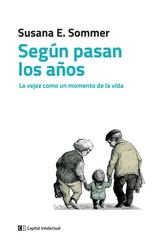40 Vito-Tomás Gómez García (ed.): «Actas de los capítulos provinciales de la provincia dominicana de Aragón, pertenecientes a los años 1368, 1369, y 1370», EV , 27, 1997, pp. 260, 272. Que la primera asignación de Vicente estuviera relacionada con la lógica en lugar de la gramática puede indicar que ya conociera bien la gramática cuando se unió a la orden. No obstante, es posible que en el capítulo provincial de 1367, cuyas actas han desaparecido, le asignaran al estudio de la gramática. Las actas provinciales de 1363, 1365 y 1366, que sí sobreviven, no mencionan a Vicente.
41 Goméz: «Actas... 1371, 1372 y 1373», p. 211.
42 Ibíd., pp. 224 y 236.
43 Fages: Notes et documents , p. 58.
44 Vito-Tomás Gómez García (ed.): «Actas de los capítulos provinciales de la provincia dominicana de Aragón, pertenecientes a los años 1376, 1377, 1378 y 1379», EV , 132, 2002, pp. 1351-1352.
45 Fages: Notes et documents , p. 64, 11 de febrero de 1389.
46 «Como veremos de su distinción entre el intellectus de una proposición y las palabras que expresan esa proposición, San Vicente cree que el lenguaje expresa algo que piensa la mente. Cada proposición significativa tiene un sentido o un intellectus que está pensado por el que expresa la proposición. Este intellectus puede ser considerado el contenido de un acto mental por el que alguien piensa algo y expresa lo que piensa en el lenguaje, pero es independiente de cualquier acto mental particular y no puede identificarse con ellos». John A. Trentman: «Vincent Ferrer on the Logician as Artifex Intellectualis », Franciscan Studies , 25, 1965, p. 326, y de forma más general, pp. 322-326.
47 Trentman: «Vincent Ferrer on the Logician», pp. 330, 335.
48 Sobre Ferrer, Trentman: «Vincent Ferrer on the Logician», p. 324. Sobre la distinción entre proposiciones y términos, véanse Paul Vincent Spade: «The Semantics of Terms», en N. Kretzmann, A. Kenny y J. Pinborg (eds.): The Cambridge History of Later Medieval Philosophy , Cambridge, Cambridge University Press, 1998, pp. 188-196; Gabriel Nuchelmans: «The Semantics of Propositions», Cambridge History of Later Medieval Philosophy , pp. 197-210 (esp. pp. 197-198).
49 Para la definición de significación, Spade: «Semantics of Terms», p. 188; Vicente Forcada: «Momento histórico del tratado ‘ De suppositione ’ de san Vicente Ferrer», EV , 3, 1973, pp. 52.
50 Terence Parsons: «The Development of Supposition Theory in the later Twelfth through Fourteenth Centuries», en D. Gabbay y J. Woods (eds.): Handbook of the History of Logic , vol. 2, Medieval and Renaissance Logic , Ámsterdam, North-Holland, 2008, p. 187.
51 Vicente Ferrer: Tractatus de suppositionibus , ed. John A. Trentman, Stuttgart-Bad Cannstatt, Frommann-Holzboog, 1997, p. 93.
52 Parsons: «Development of Supposition Theory», 187, pp. 193-194.
53 Ibíd., p. 222.
54 Catarina Dutilh Novaes: «Logic in the Fourteenth Century after Ockham», en Handbook of the History of Logic , 2, pp. 449-461.
55 Trentman: «Vincent Ferrer on the Logician», p. 327.
56 José Ángel García Cuadrado: «Tradition and Innovation in the Logical Treatises of St. Vincent Ferrer 1350-1419», en I. Angelelli y P. Pérez-Ilzarbe (eds.): Medieval and Renaissance Logic in Spain , Hildesheim, Georg Olms Verlag, 2000, pp. 180-181.
57 John A. Trentman: «The Questio de unitate universalis of Vincent Ferrer», Mediaeval Studies , 44, 1982, p. 110.
58 Ferrer: Tractatus de suppositionibus , p. 88.
59 Trentman: « Questio de unitate universalis », p. 116.
60 Jordán Gallego Salvadores: «Santo Tomás y los dominicos en la tradición teológica durante los siglos XIII, XIV y XV», EV , 2, 1974, pp. 498-499.
61 Gómez: «Actas... 1368, 1369, y 1370», p. 258; Gómez: «Actas... 1376, 1377, 1378 y 1379», p. 366; V.-T. Gómez García (ed.): «Actas de los capítulos provinciales de la provincia dominicana de Aragón pertenecientes a los años 1380, 1381, 1387 y 1388», EV , 33, 2003, p. 411.
62 García: «Tradition and Innovation», p. 167.
63 Trentman: « Questio de unitate universalis », p. 115.
64 García: «Tradition and Innovation», p. 168.
65 Trentman: « Questio de unitate universalis », pp. 116-117.
66 García: «Tradition and Innovation», pp. 169-175.
67 Forcada: «Momento histórico», p. 88; García: «Tradition and Innovation», p. 161.
68 Mauricio Beuchot: «La lógica en la España medieval», Revista Española de Filosofía Medieval , 3, 1996, p. 45.
69 Pietro Ranzano: Vita , en AASS , 1 de abril, 487, columna 1.
70 John A. Trentman: «The Text of De Suppositionibus », en Ferrer: Tractatus de suppositionibus , pp. 83-85.
71 García: «Tradition and Innovation», p. 181.
72 Dutilh Novaes: «Logic in the Fourteenth Century», pp. 435-436.
73 Mauro Zonta: «The Original Text of Vincent Ferrer’s Tractatus de unitate universalis Discovered in an Unknown Hebrew Translation?», Bulletin de philosophie médiévale , 39, 1997, pp. 148-151.
74 John A. Trentman, introducción a Vicente Ferrer: Tractatus de suppositionibus , p. 12; José Ángel García Cuadrado: «Los tratados filosóficos de san Vicente Ferrer: nota histórica y bibliográfica», Revista Española de Filosofía Medieval , 1, 1994, p. 65.
75 Gyula Klima: «The Nominalist Semantics of Ockham and Buridan: A “Rational Reconstruction”», en Handbook of the History of Logic , 2, p. 390.
76 Jean Favier: Les papes d’Avignon , París, Fayard, 2006, pp. 38-45.
77 Ibíd., pp. 109-114, 121-131, 288 y 510-53.
78 Ibíd., pp. 135, 137 y 539. Para un buen análisis de Brígida de Suecia, Catalina de Siena, el papado de Aviñón y el cisma, véase Renate Blumenfeld-Kosinski: Poets, Saints, and Visionaries of the Great Schism , College Park, PA, The Pennsylvania University State Press, 2006, capítulo 2.
79 Favier: Les papes d’Avignon , pp. 474-482 y 530-545.
80 Algunos contemporáneos del siglo XIV e historiadores modernos han propuesto que los cardenales exageraron o inventaron retrospectivamente la amenaza que suponía la multitud romana; véanse, por ejemplo, Marc Dykmans: «La troisième election du pape Urbain VI», Archivum historiae pontificiae , 15, 1977, p. 262; Walter Ullmann: The Origins of the Great Schism , Hamden, CT, Archon Books, 1967; publicado originalmente en 1948, pp. 31 y 44. No obstante, en los meses y semanas anteriores a la muerte de Gregorio XI y la elección de Urbano VI, la población romana amenazó al colegio cardenalicio y el miedo a ser asesinados fue lo suficientemente real para que se ejecutara a presuntos conspiradores. Véase Richard Trexler: «Rome on the Eve of the Great Schism», Speculum , 42, 1967, pp. 489-509. Sobre la elección de forma más general, véase Favier: Les papes d’Avignon , pp. 549-557.
81 Marc Dykmans argumenta a favor de tres elecciones separadas el 8 y 9 de abril. Dykmans: «La troisième élection», pp. 217-264. Véase también Favier: Les papes d’Avignon , pp. 552-553, que habla de dos elecciones en lugar de tres.
82 Favier: Les papes d’Avignon , pp. 558-562; Ullmann, Origins , capítulo 3.
83 Favier: Les papes d’Avignon , pp. 562-571, 595; Ullmann, Origins , capítulo 4.
84 Favier: Les papes d’Avignon , pp. 572-474.
85 Ibíd., pp. 578-579.
86 Ibíd., pp. 568 y 587-589; Luis Suárez Fernández: Castilla, el cisma y la crisis conciliar 1378-1440 , Madrid, Consejo Superior de Investigaciones Científicas, 1960, pp. 6-11.
Читать дальше












